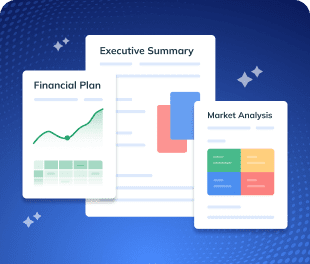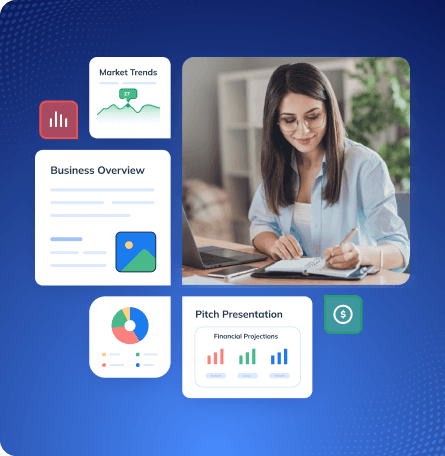With the lack of space in big cities mobile homes and on-the-go ways of living are increasing. Not just that, many people also consider recreational vehicles a budget-friendly and comfortable way of traveling.
With more and more amenities coming up RV parks are not just huge camping sites but entire ecosystems in themselves.
And if you like the idea of managing such sites, conducting larger-than-life activities, and being in large open spaces, then an RV park business might be the right choice for you.
Industry Overview
The RV park industry stood at a value of 8.7 billion dollars in 2020 and would continue to grow at a rapid pace.
Moreover, successful RV park owners make up to $50,000 to $90,000 a year.
And these numbers would grow as the number of people who have switched to this style of living and traveling continues to grow each year.
Most of the growth in this sector has come from people aged under 34 who have adopted this style of traveling due to free Wi-Fi and music festivals at the camping sites.
Apart from that, the industry is yet to reach its full potential. Because people over the age of 55 are gradually adopting this way of traveling, the industry’s growth would become faster as this age group has more money to spend and more time at hand due to retirement.
So, now is the time as good as any to get started with your RV park business.
Say goodbye to boring templates
Build your business plan faster and easier with AI
Plans starting from $14/month

Some Aspects to Consider Before Starting an RV Park Business.
Pick a location and figure out land use requirements
A good location is especially crucial for an RV park. The location should be accessible to your target audience, convenient to find, in a city or region which receives a lot of tourists, etc.
Also, figure out the size of your RV park and land requirements for the number of spots you want to offer, places for additional activities, etc.
Make a list of additional activities that you’ll conduct
RV parks have become a major attraction due to the number of activities and amenities they offer. Modern-day RV parks are a lot like resorts. But you can choose what you want to offer based on your target audience’s preferences.
From art and music festivals to clubs, RV parks have something to attract everyone from boomers to Gen Z.
Identify your target audience
As different segments of the demographic prefer different services and amenities, RV parks should figure out which customer group they want to cater to and plan their entire business around it.
Identifying your target audience is crucial for everything from picking your location to making your marketing plan.
Get the necessary licenses and permits
From land acquisition papers to construction papers, there are a bunch of legalities that you should figure out before you start planning your business.
Make a checklist of all the legal documents and the right time to get each one to make your task easier.
Sources of Funding for an RV Park Business
One of the majors of writing a business plan is to get funding. Here are a few sources of funding for an RV park business:
Bank Loans
Banks require a proper business plan in which they can put their confidence to provide you with funds.
Angel Investors
They will fund your business in exchange for equity or as a loan. Which makes a business plan necessary in either case to act as evidence of your strategies.
Write Your Business Plan
If you are planning to start a new RV Park business, the first thing you will need is a business plan. Use our sample RV Park Business Plan created using Upmetrics business plan software to start writing your business plan in no time.
Before you start writing your business plan for your new RV park business, spend as much time as you can reading through some examples of Entertainment & Recreation related Business Plans.
Reading sample business plans will give you a good idea of what you’re aiming for. It will also show you the different sections that different entrepreneurs include and the language they use to write about themselves and their business plans.
We have created this sample RV Park Business Plan for you to get a good idea about how perfect an RV Park business plan should look and what details you will need to include in your stunning business plan.
RV Park Business Plan Outline
This is the standard RV Park business plan outline, which will cover all important sections that you should include in your business plan.
- Executive Summary
- Mission Statement
- Vision Statement
- Products and Services
- Services
- Customer Focus
- Management Team
- Success Factors
- Financial Summary
- 3 Year profit forecast
- Company Summary
- Products and Services
- Market Analysis
- Industry Analysis
- Market Trends
- Target Market
- Customer Analysis
- Demographic Profile of Target Market
- Customer Segmentation
- Strategy & Implementations
- Sales Strategy
- Advertising Strategy
- Public Relations
- Advertising
- Ongoing Customer Communications
- Pre-Opening Events
- Pricing Strategy
- Sales Forecast
- Sales
- Operations Plan
- Functional Roles
- Service Functions
- Administrative Functions
- Milestones
- Functional Roles
- Financial Plan
- Important Assumptions
- Brake-even Analysis
- Projected Profit and Loss
- Profit Yearly
- Gross Margin Yearly
- Projected Cash Flow
- Projected Balance Sheet
- Business Ratios
After getting started with Upmetrics, you can copy this sample business plan into your business plan and modify the required information and download your RV Park business plan pdf or doc file.
It’s the fastest and easiest way to start writing your business plan.
The Quickest Way to turn a Business Idea into a Business Plan
Fill-in-the-blanks and automatic financials make it easy.
Download a sample RV Park business plan
Need help writing your business plan from scratch? Here you go; download our free RV Park business plan pdf to start.
It’s a modern business plan template specifically designed for your RV Park business. Use the example business plan as a guide for writing your own.



